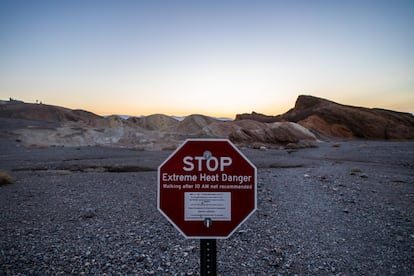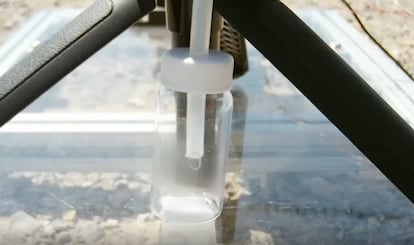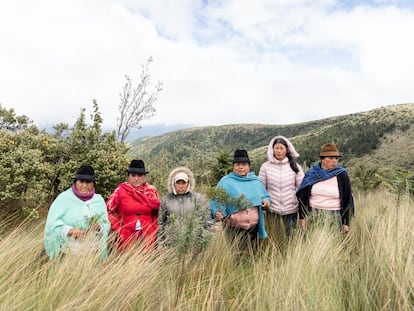New technology produces water in Death Valley, but Jevon’s Paradox looms
The inconvenient truth of striving for resource efficiency is that it often results in higher consumption

According to the United Nations, even though there is enough water on Earth for everyone, around two billion people still suffer from scarcity due to lack of access or infrastructure. Technological solutions exist: utilizing sea and groundwater, recycling wastewater, improving distribution and consumption efficiency, and collecting water from the atmosphere. Recent research published in Nature demonstrated the ability to produce water in Death Valley, a scorching hot part of California’s Mojave Desert. This was accomplished by capturing and purifying water from fog, and by imitating the way spiders and beetles collect water. Yet, these advancements encounter a challenge put forth by William Stanley Jevons two centuries ago: as resource efficiency improves, consumption tends to increase.
The global demand for water continues to rise. According to the United Nations, water consumption has grown at twice the rate of population growth in the last century. Additionally, there is an increasing number of regions facing chronic water shortages. Jesús M. Paniagua, author of a recent book on the history, technology, and future of water, said, “There’s actually enough water on the planet to supply its nearly eight billion people. The problem is it’s distributed poorly, wasted, contaminated and managed in a totally unsustainable way.”
Cristina Monge Lasierra, a political scientist at the University of Zaragoza (Spain), recalls the warning of former UN Secretary Ban Ki-moon: “The battle for sustainability will be fought in the cities.” That’s where 75% of the population and 80% to 85% of the wealth will be concentrated. “What happens in the cities and how they connect with the outlying areas will be very important,” said Monge.
The majority of water consumption — about 80% according to the Organization for Economic Cooperation and Development (OECD) — goes towards agriculture and livestock, which in turn responds to the demand for food from urban areas where most of the population resides. The remaining significant water usage is in industrial and urban settings. “The extreme weather we’re experiencing in Spain really highlights the importance of integrating water as a fundamental element in reimagining our cities,” said Luis Babiano of AEOPAS, a Spanish association of public water supply and sanitation operators.
Technology allows for efficient water distribution, though there is still progress to be made. According to Francisco Lombardo, president of the Water Economy Forum, “More than a quarter of the water distributed in Spain is wasted due to a lack of infrastructure investment.” Lombardo is committed to “rebuilding water infrastructure and implementing technology for better control over water leakage and loss.”
Paniagua acknowledges that “very deficient systems are losing large amounts of water” and cites the capital of Uruguay as an example. “Montevideo has been dealing with a supply issue due to a three-year drought. On top of that, the [water distribution] network has losses of around 50%, which means that out of every 100 liters distributed from reservoirs, 50 are unfortunately lost.”
Paniagua thinks the most effective way to access more water is by tapping into underground reserves, practicing mindful consumption, reusing wastewater, and investing in desalination. The aim is for these systems to become more affordable and environmentally friendly with the increasing use of renewable energies. Desalinating seawater requires significant energy and produces waste, like brine. Similarly, capturing atmospheric water in regions with less than 70% humidity requires a considerable amount of energy, rendering this solution ineffective.
Spiders show how to get water in the desert
A recent study published in Nature Water reveals how researchers improved the process of extracting water from the hot and dry atmosphere in California’s Death Valley desert, despite temperatures of up to 135 °F (57 °C) with relative humidity below 7%.
“We have verified the capability of technology to tackle the increasing dilemmas posed by water scarcity, exacerbated by environmental issues. This technology offers a secure water resource that is not reliant on geographical or climatic conditions,” said the study’s lead author, Woochul Song.

A disadvantage of utilizing atmospheric water, like fog, is the contamination it may contain. However, researchers at the Federal Institute of Technology in Zurich (ETH) have developed a technique that both harvests and purifies water from fog. They accomplish this by using a metal mesh coated with a mixture of polymers and titanium dioxide, which acts as a chemical catalyst. “Our system is designed for use in areas with air pollution, like densely populated urban centers,” said Ritwick Ghosh, a scientist at the Max Planck Institute (Germany) who collaborated in the study published in Nature Sustainability.
University of Waterloo (Canada) professor Michael Tam has developed another water-capture technology using special sponges that mimic the way spiders and other insects continually capture moisture from their environment. “A spider web is a remarkable feat of engineering that efficiently captures water. The spider doesn’t have to go down to a river to drink; instead, its web cleverly traps moisture from the air.”
Paniagua believes in technological solutions. “Throughout history, technology has consistently helped us overcome challenges.” His research focuses on the widespread adoption of resource-optimizing technology in crop fields, like onsite weather stations, humidity sensors, flow and pressure monitoring systems in irrigation networks, and surveillance and tracking drones.
However, Paniagua has concerns regarding an issue identified by British economist William Stanley Jevons two centuries ago in relation to technological solutions. Jevons noted that improving efficiency in steam engines did not lead to a decrease in coal consumption. Instead, it resulted in an increase due to the proliferation of machines. This paradox helps explain why expanding road networks often leads to more traffic. “I’m not saying that will always happen,” said Paniagua. “But having more irrigation capacity often leads to more surface area being irrigated. A friend of mine is concerned that a nuclear fusion solution to produce abundant and affordable energy could potentially be misused. Nonetheless, this should not dissuade us from our pursuit of enhancing efficiency.”
Another drawback of technological solutions for the water problem is the uneven increase in demand. Paniagua points to the situation in Africa, where there is limited access to resources, sanitation and energy, coupled with rapid population growth. “To ensure a reliable supply, it’s crucial to prioritize investments and improvements. Large-scale water transfers present numerous challenges, ranging from technical to political, making them impractical. This is a significant problem that needs to be addressed.” In March 2023, UNICEF released a report on the situation of around 190 million children in Africa without access to safe drinking water. This leads to the heartbreaking deaths of 1,000 children under the age of five every day.
The Cádiz example
Managing a seemingly simple urban potable water source can be more complex than meets the eye. Luis Babiano highlights how incorporating new infrastructure to provide this essential service to the residents of Cádiz (southwestern Spain) uncovered a flaw in the traditional approach to designing these facilities. “The location criteria usually only include accessibility and cost. Factors that contribute to a people-friendly city are often ignored,” he said.
The design of the Cádiz water distribution network started from scratch and analyzed residents’ main routes during work and leisure time, as well as their modes of transportation (foot, bicycle, public transportation and private vehicles). The study even considered the water needs of pets.
Sign up for our weekly newsletter to get more English-language news coverage from EL PAÍS USA Edition
Tu suscripción se está usando en otro dispositivo
¿Quieres añadir otro usuario a tu suscripción?
Si continúas leyendo en este dispositivo, no se podrá leer en el otro.
FlechaTu suscripción se está usando en otro dispositivo y solo puedes acceder a EL PAÍS desde un dispositivo a la vez.
Si quieres compartir tu cuenta, cambia tu suscripción a la modalidad Premium, así podrás añadir otro usuario. Cada uno accederá con su propia cuenta de email, lo que os permitirá personalizar vuestra experiencia en EL PAÍS.
¿Tienes una suscripción de empresa? Accede aquí para contratar más cuentas.
En el caso de no saber quién está usando tu cuenta, te recomendamos cambiar tu contraseña aquí.
Si decides continuar compartiendo tu cuenta, este mensaje se mostrará en tu dispositivo y en el de la otra persona que está usando tu cuenta de forma indefinida, afectando a tu experiencia de lectura. Puedes consultar aquí los términos y condiciones de la suscripción digital.
More information

An army of 800 women protects Ecuador’s water

Kenyans look to the foggy heavens for water amid state neglect
Archived In
Últimas noticias
Most viewed
- Sinaloa Cartel war is taking its toll on Los Chapitos
- Oona Chaplin: ‘I told James Cameron that I was living in a treehouse and starting a permaculture project with a friend’
- Reinhard Genzel, Nobel laureate in physics: ‘One-minute videos will never give you the truth’
- Why the price of coffee has skyrocketed: from Brazilian plantations to specialty coffee houses
- Silver prices are going crazy: This is what’s fueling the rally









































